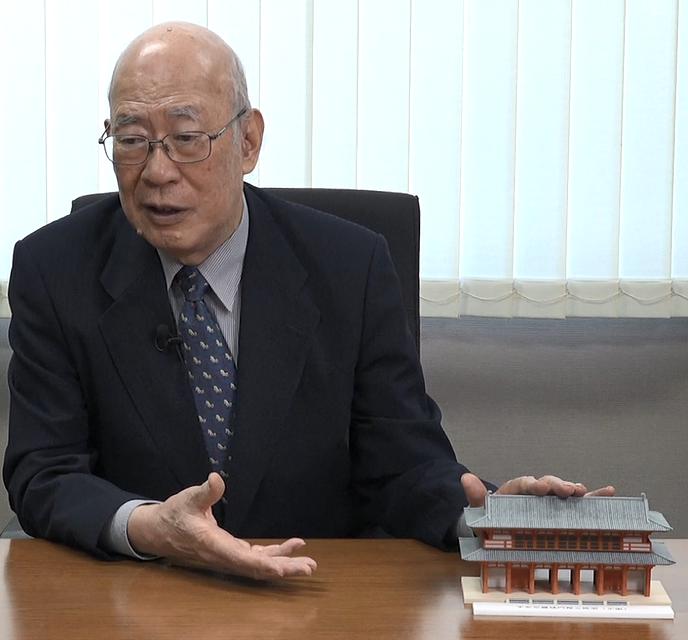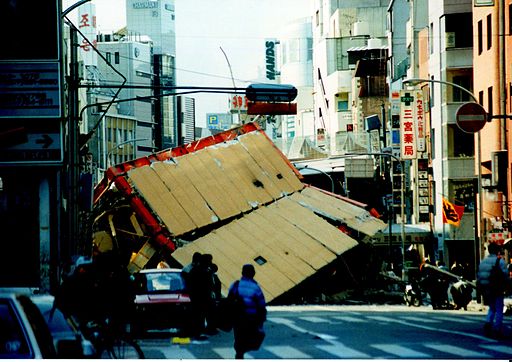Kenzo Toki, Former Director of R-DMUCH
Kenzo Toki was born in 1938 in Kagawa prefecture. He received a Ph.D. in civil engineering from Kyoto University in 1966 and served as a Professor of there until 2002. He joined Ritsumeikan University in 2002 as a Professor in the Department of Civil Engineering. Dr. Toki served as a director of the Research Center for Disaster Mitigation of Urban Cultural Heritage until 2013. In 2013 this research center was reorganized as the Institute of Disaster Mitigation for Urban Cultural Heritage (DMUCH). He was the driving force behind the establishment of DMUCH and the UNESCO Chair program’s International Training Course (ITC). He is still an advisory member of DMUCH as a special research fellow. In addition, Dr. Toki is the vice president of NPO Tomorrow’s Kyoto.

It has been 15 years since I started ITC (International Training Course) at Institute of Disaster Mitigation for Urban Cultural Heritage, Ritsumeikan University. We didn’t have many case studies regarding this area when we started. But now ITC is the well-known international program in Historical and cultural heritage management that 152 experts from 62 countries have participated with.
Why is Disaster Management focused on Cultural Heritage?
It all began with the Hanshin-Awaji Earthquake in 1995.On January 17th, the day the earthquake occurred, there was a workshop that 100 earthquake experts attended from both Japanese and American research institutes. It was intended to mark the first anniversary of the Northridge earthquake in 1994 that hit the Los Angels area and about 60 people died. Since I was giving a talk at the workshop, I was there too.
Even though the earthquake occurred in the early morning, we didn’t know how serious it was until we saw the news on TV. The roads in the centre were all shattered and a countless number of houses were destroyed. We had to cancel the workshop even though there was still a day and a half left.
I would say the earthquake completely changed my life. The fire damage was nothing but catastrophic. I felt devastated when I saw the fire but it became my reason to contribute myself to disaster prevention.
I remember Mainichi Broadcasting approached me asking for help with their TV program featuring the earthquake. I accepted without really thinking but this changed my life. Up until then, all I had thought about was earthquake resistance. When I was up in the helicopter, all I saw was the city covered with fires and black smoke. I have never seen anything like that before. It was excruciating to face reality. If something is knocked down, you can just put it back up. But when it’s reduced to ash, there’s nothing you can do. I realized how scary fires are. I vividly remember the fear that those fires brought.

In Kyoto, there are many shrines and temples around the mountains. If they were burnt down after an earthquake, the city would be devastated.
What was your first step after the experience of the earthquake?
As I continued to raise my voice about the danger of fire in my talks, people started noticing my work. In 1997, Two years after the earthquake, I founded NPO to protect valuable cultural assets from natural disasters and pass on traditional cultural heritage to posterity.
Why did you choose Kyoto for DMUCH ?
If we focused on one location, I thought it had to be Kyoto. Firstly, Kyoto is a historical city that has over a 1,200 year-history. Because cultural assets are concentrated in one area, I wanted to demonstrate that we could deal with issues related to cultural assets efficiently. Secondly, I have objective data that I found. At that time, there were 14 national treasures or important cultural properties in Kyoto for every 100,000 people in the city. Among the cities in Japan, Kyoto boasted the highest number, whereas other cities had one or two.
When I decided to focus on Kyoto, I resigned from the NPO and created an organization ”Tomorrow’s Kyoto” dedicated to protecting cultural assets for the future.
How ITC is started?
One of our research themes was to establish an international hub for our institute. However, there was almost nothing at that time. No structure and no achievements. Because we didn’t have any resources in Japan, we came up with the idea of inviting experts from overseas who have experiences in cultural heritage as well as experts in disaster mitigation. We thought it would be great to bring experts from both fields over and collaborate. The idea led us to great success and this is the beginning of ITC.
I consulted with UNESCO about how to build an international hub within the center. Then I came across the UNESCO Chair program that matched my concept. I selected Professor Masuda as UNESCO Chairholder and then I welcomed Dr. Rohit Jigyasu to develop the program for UNESCO chair together.
From there, we decided to create an international training course focusing on disaster mitigation at international cultural heritage sites. There is nowhere else in the world that nurtures individuals while combining disaster mitigation and cultural heritage. Now we have Ritsumeikan University, but at the time, I was the only person advocating the combination of both. As time went by, people gradually started taking notice and that was how we started ITC. We started with 8 people but now ITC has successfully grown over 15 years.
How did you start building a partnership with an international organization?
Since we did not know much about DRM (Disaster Risk Management) of Cultural heritage, we invited an expert from ICCROM (International Centre for the Study of the Preservation and Restoration of Cultural Property), Mr. Herb Stovel, who taught their activities on DRM of Cultural heritage, the importance of research and capacity building courses with experts from various countries. It was the key lecture to begin ITC.
ICCROM is our main partner to this day. Since we have consistent support from international organizations such as UNESCO, ICCROM, and ICOMOS/ICORP, we have a strong global network and we also have our resource persons and participants from these organizations.
What is your current aspiration?
Because I have been dedicated to disaster mitigation at cultural heritages for such a long time, it is my life mission to pass on cultural heritage to the next generation adding more value.
For example, I have two personal projects that I have been thinking of, even before I launched Tomorrow’s Kyoto. One is the restoration of the Rajyomon gate. It was built in 794 by Emperor Kanmu but 180 years later it was destroyed by a typhoon. Because this gate was a signature to people back then, we decided to restore it to inspire and bring joy to the citizens of Kyoto.
Another one is returning water to the Kyoto basin so that we can bring in enough water to protect the city in the event of a huge fire. Kyoto pulls in water from Lake Biwako in Shiga which means it is possible to make it happen. These are important factors that kept me motivated to create a better future for the next generation.
What is your message to all experts?
The cultural heritage we inherit isn’t a gift from the past. As much as we have respect for our ancestors, we need to keep considering what’s important and make our own additions as needed. This is not only my belief but also the core values of our program.
